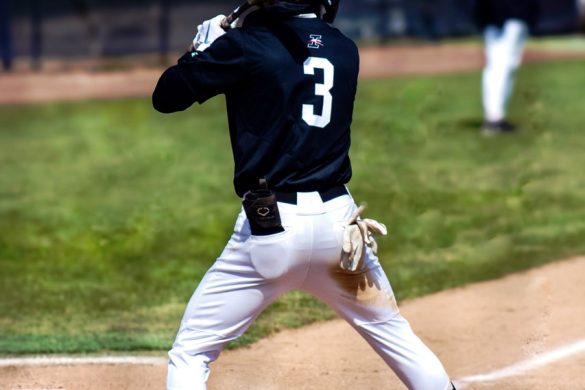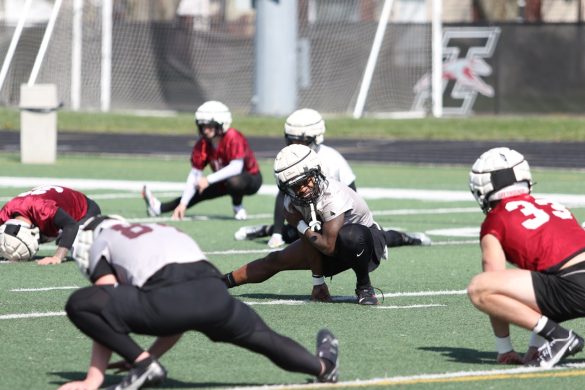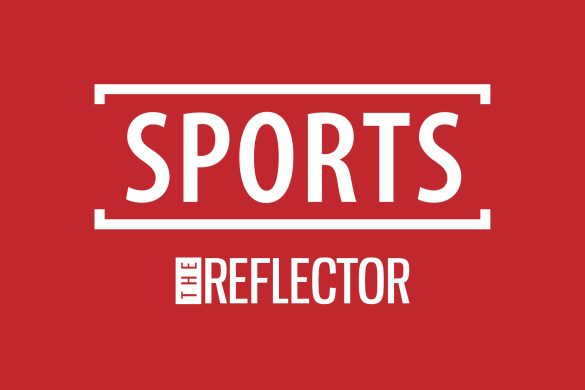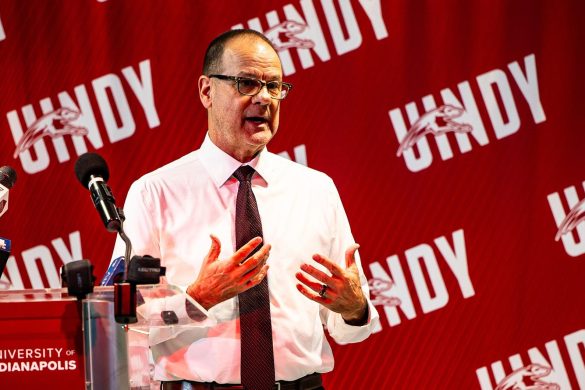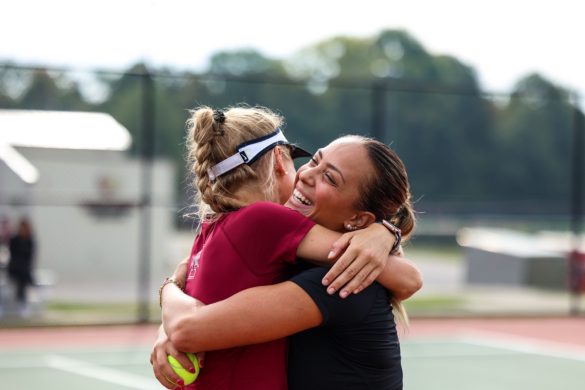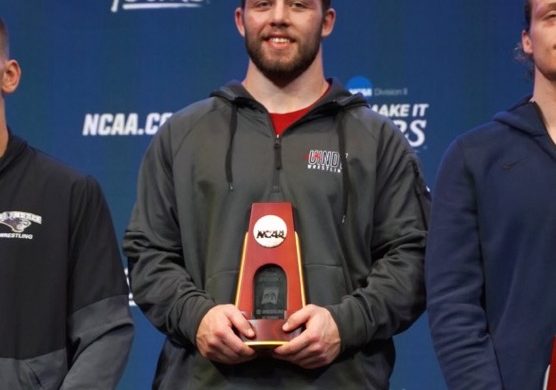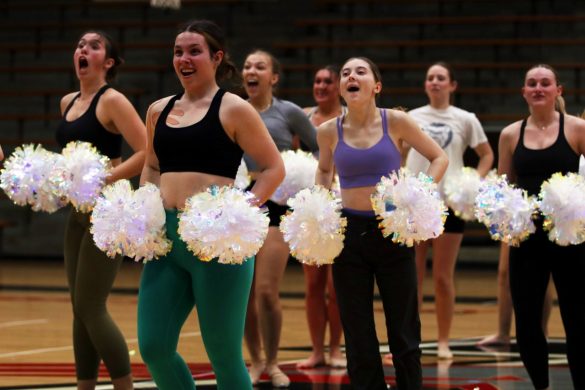It is now official that former Athletic Director for Compliance Scott Young is the new Vice President for Intercollegiate Athletics. Young, who has been with UIndy for over 30 years, officially took over the position after the retirement of Sue Willey. Our Sports Editor and Photo Editor Jacob Walton sat down with Young over Zoom to discuss the job change, COVID-19 response and the future of UIndy Athletics.
Below is a transcript of their interview. It has been edited for length and clarity.
The Reflector: Now that it is 100% official, and Sue Willey has fully retired, how does it feel to be the Vice President of Intercollegiate Athletics?
Scott Young: [I] obviously feel very excited [and] very blessed. [I’m] a little bit overwhelmed still with just the process of transitioning during COVID[-19]. I don’t think this is how I imagined it would go, but just trying to adapt day-by-day. I think it’s probably going to be really truly a bit of time before I can really sit back and actually reflect on the opportunity and what it truly means and all the hard work along the way that has allowed me to get to this point, because basically right now, it’s just dealing with the day-to-day operations and making sure that we’re going forward as an athletic department and working on the cabinet with President [Robert] Manuel. [There’s] not much time to actually step back and truly enjoy the opportunity, but just trying to stay at work right now and try to lead the university forward.
TR: Speaking of Sue Willey, what was the last piece of advice Sue Willey gave you before she left?
SY: You know, it’s kind of crazy just because there really wasn’t that much time where she was on campus right towards the end. She had transitioned off campus. I think she just reminded me to be myself, and just continue to do the right things and always take care of our student-athletes. And to put your own spin on things, but just remember what UIndy is and what has been built here by a lot of great people.
TR: What has been your favorite part of the job so far?
SY: I mean the same part as it’s been for being at the University of Indianapolis, as I’m sure you’re aware with just the interactions you’ve had. There’s so many great people here at UIndy, whether that be within athletics, whether that be within our campus community. So I think it’s just working with the people at UIndy is one of the main reasons that I’ve always wanted this opportunity, and one of the reasons that I’ve stayed at the University of Indianapolis since I started as a student back in 1994. So just it’s the people. I don’t think that will ever change.
TR: What have been some of the biggest challenges you had so far?
SY: I think it’s just balancing the equation of making sure to make sound decisions for the institution while still providing opportunities for our student-athletes. Just trying to balance the equation of the NCAA requirements, what’s coming forward from the GLVC and then you match … [that with] the university re-engagement plan. And just trying to make sure that we’re making the decisions that are in the best interests of the University of Indianapolis, while still providing the most opportunities we can for our student-athletes.
TR: Going into the future and the rest of the year, what are some of the plans that you might have UIndy Athletics coming soon?
SY: The main thing right now is just to make sure that we provide opportunities for our student-athletes. Obviously the number one priority is we keep all of our student-athletes healthy. We keep them safe. We provide them opportunities to get better at their sport, and we’re getting closer and closer to the winter sports season and the possibilities of basketball and wrestling and swimming and diving and indoor track and field. But [it is] also very exciting that tennis and golf are already competing.
We had our tennis teams compete in the ITA [Midwest Regional Tournament]. We’ve had both of our golf teams competing here in the last few weeks. They’re off to a tremendous start and just a lot of excitement to be able to see our student-athletes compete. I think that we take that for granted sometimes. It’s just always been the norm that you get to school when everybody starts competing really quickly. But to see the golf teams and tennis teams actually competing and competing in meaningful competitions, that was pretty special just because it’s been quite a while, and it took a lot of hard work from a lot of people to get to that point.
TR: You spoke a little bit about the GLVC, what do you think about the response by the GLVC and the NCAA? Do you think they did a good job with how they responded to COVID-19?
SY: [I’m] especially gonna hit on the GLVC side, just because I’m such a big part of those conversations with the AD’s [Athletic Directors] that have been throughout the summer. [I’ve been] fortunate with being here at UIndy and Sue [Willey] in the transition, we were both able to be on the meetings and then transitioned to me leading the conversations for UIndy. [We have a] really great group of ADs within the conference that work together and make sure that the decisions that are made best for all the institutions and not decisions made just best for one institution.
I think with COVID[-19], you have all these different standards, depending on what city you’re in, what state you’re in, but just how well the ADs worked together to take the leap forward and the leadership of the conference office, and then just working within the NCAA requirements and guidelines. Obviously the number one priority for everyone is to keep everyone safe and just being able to go forward. I think just working with all the AD’s in the conference has been a really good experience. I think as a group we’ve done a really good job to provide opportunities for our student-athletes, but also create a safe environment.
TR: What sport are you most looking forward to seeing in action when everything starts ramping up again?
SY: I really don’t know that I have a favorite. I think right now my favorites are tennis and golf because they’re the ones competing …. I was able to, on a Sunday afternoon, sneak out of the office for a little bit and get to watch the tennis teams compete at the ITA. I know we have an administrator that’s been out at each one of the golf events here early on, minus the women’s golf event just this week. But I think I’m just looking forward to actually seeing our student-athletes compete here on campus. The ITA Tennis Regional was at Center Grove [High School]. The golf [team] has been off-campus, but I think just seeing our student-athletes compete on our own campus, whether that be with fans or without fans, but just seeing all the hard work really be put into place here. I think that [the] first home contest under my realm is going to be pretty special, whether that be football or basketball or wrestling, whichever one ends up [and] happens to be that first event [such as] swimming and diving. Whichever one happens here on our campus first.
TR: Last time we spoke when it was first announced you would become the new VP, you mentioned briefly that there was going to be some administrative changes due to you moving up to VP of intercollegiate athletics and it had left a hole for the AD of compliance. Can you go a little bit into that process and if anything has changed?
SY: Jennifer Mervar, that has been here in the past, she was our business manager, [and] we’ve kind of combined the business and compliance role. And then we just got to reallocate things throughout the department, and most important for me with our administrative staff is that no matter what their exact role is within the department, I feel it’s really a priority of mine to make sure that they have meaningful opportunities to lead. I think that’s the best way to get [people to] buy in and just get the passion from them into UIndy and UIndy Athletics is that I’m trying my very best to provide them meaningful opportunities where the decisions they make are meaningful to our student-athletes, to our university, and that they’re not just people doing just their job. I want them to be leaders in the department and on-campus and just trying to do my best to provide those meaningful opportunities. I think that will be even more evident as we get a little bit through the COVID[-19] process…. I think it’s just one of those situations serving on the president’s cabinet is that myself, I have to be very, very involved in the COVID[-19] process from really the entire department working directly with our sports medicine staff. But hopefully as we get through this, I can provide more and more meaningful opportunities and allow everyone a good chance to lead.
TR: With a lot of the fall sports not competing, has the budget allocated for athletics changed at all?
SY: … We’ve had to cut back our budget a little bit for this year. I think that’s a university theme, that’s a nationwide theme, I think, in Division II athletics. And I still plan to make sure in the spring time when all of our sports are competing and up and running, that we provide them the best opportunities and the opportunities to compete. So I think we’re in a really good place to be able to allow our teams to travel and allow our teams to compete at home and those types of things that are very important. It’s so important that our student-athletes have meaningful opportunities to compete, and then also making sure that our sports medicine staff has the resources they need to keep everyone safe and get everybody back on the field, [back on] the court, back in the pool as quickly as possible. So I think we’re in a good place budgetary wise. I think that it would have been a little bit of a challenge if we had the full schedules, [with] both the NCAA kind of backing off the schedules even prior to the fall sports being canceled. I think just a little bit of a limit in competition has really put us in a good place to make sure that at this point we don’t have to make those tough decisions. We’re going to be allowed to provide opportunities for our student-athletes to compete in the fullest sense here once that spring time rolls around.
TR: Looking into the far future, what are some of the things that you want to have accomplished in 10 to 20 years?
SY: I think for myself is that I think my priority has always been that we’d be the elite Division II private institution in all of the country. And that comes from a well-rounded approach where our student-athletes are, as you see if you’ve ever come into my office, is that our student-athletes, win as students, win as people, win as athletes. But I think being the elite, the top private institution in all Division II athletics I think that’s just my priority for everything we do. I think that if you are able to maintain that you’re going to be in the top five of the Director’s Cup annually, and I think that’s a really special place that you be a top five Director’s Cup school while also having all the academic accolades and having the high GPAs and having all the great people we have as our student-athletes and our coaches. I think if you can combine the three of those and basically be what everybody wants to be when it comes to [when] they talk about Division II private institutions. I think that’s where I would like this legacy to be when my days come like Dr. [Sue] Willey…. and I get to retire here from the University of Indianapolis is to say that we’re the elite private institution of all of Division II athletics.
TR: Is there any message that you might want to give out to the UIndy community from an athletics standpoint sort of looking forward to winter sports and spring sports?
SY: I just want to applaud the sports medicine staff, all of our coaches and all of our student-athletes, just all the hard work they put in to navigating through COVID[-19] and putting us in a great place as an athletic department and as an institution. As I mentioned that this week, we’ve really ramped up our practice activities here on campus and provided the opportunities for most of our sports to get into a more traditional practice model. And that’s due to the hard work of the coaches and the student-athletes and especially the sports medicine staff, the other administrators, all the hard work by others has put us in that place where we can take that next step forward and still feel very comfortable. We can do that safely.
I think it’s a really great opportunity timewise too because I think the student-athletes were getting a little bit bored with what they were doing and especially,I don’t know if the coaches would admit it, but I think they were in a place where they needed to get a little bit more activity and get a little bit more involved. I think they were starting to get a little bit stagnant as well. So I think it’s just a great opportunity this week to be able to get our student-athletes back to a more traditional practice model for those who weren’t in that, and just all the hard work that everybody’s put into place to create that safe environment within UIndy Athletics. I think as the semesters went on and through the end of the summer, is that the systems and the processes of the university and within the athletic department, they just continue to get better and better. And I think that that’s really been a focus to make sure that we do everything we can with the systems and the processes as working with the rest of the campus community, because you won’t always be able to control the virus and you won’t always be able to control the student-athlete population in every decision that they make. But if you have a really sound system and process in place that you can manage through any situation that’s put in front of you.
